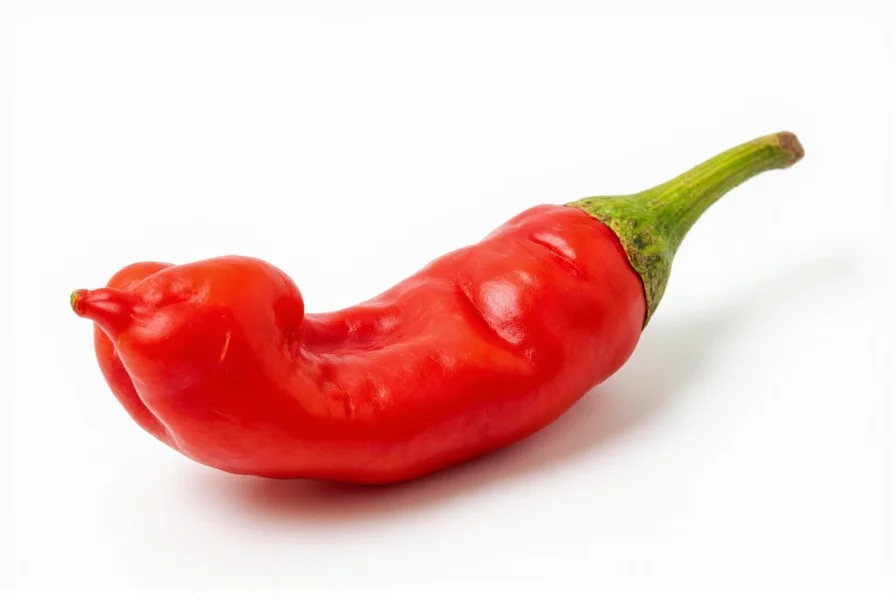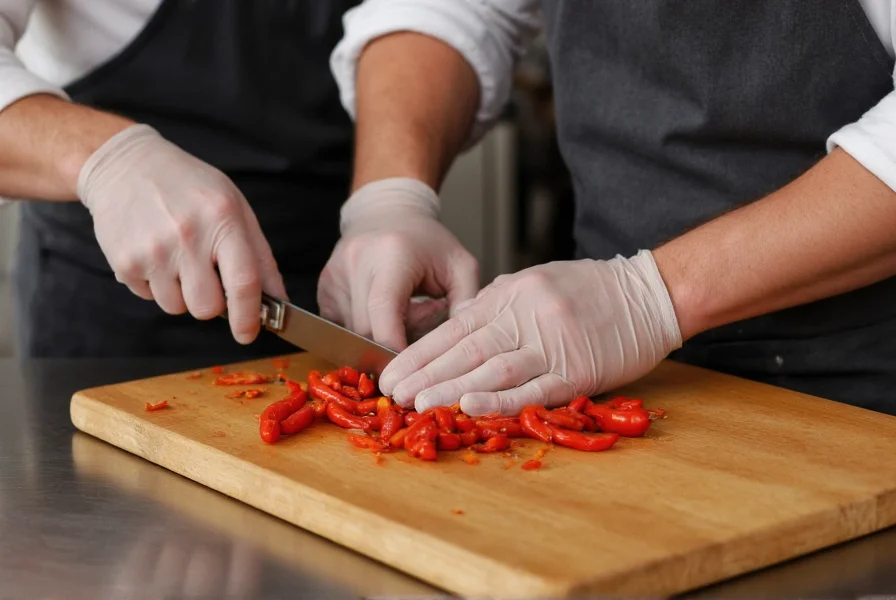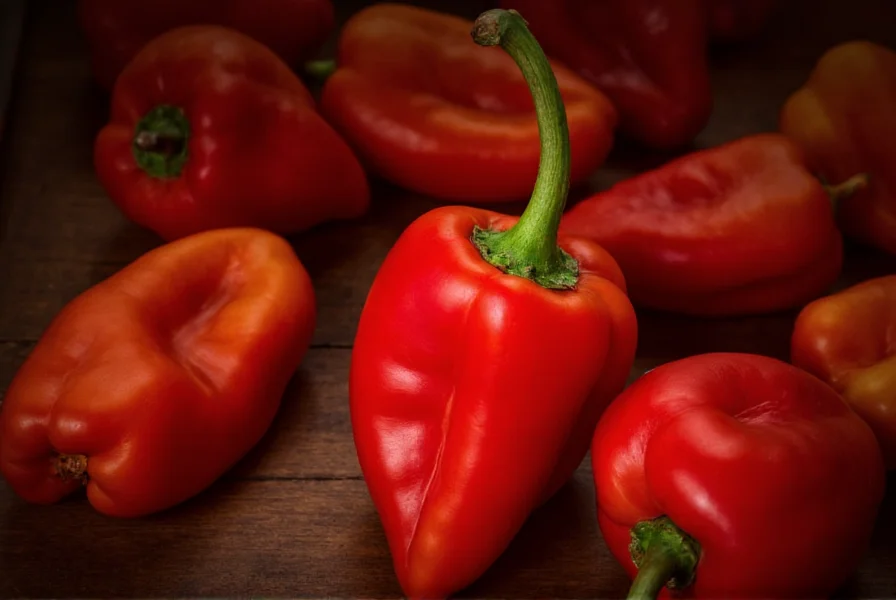Understanding exactly how hot is a ghost chili pepper requires context about the Scoville scale and how this legendary chili compares to others. Developed by pharmacist Wilbur Scoville in 1912, the Scoville scale measures capsaicin concentration—the compound responsible for chili heat. The ghost pepper's position on this scale reveals why it earned its fearsome reputation and requires careful handling.
The Science Behind Ghost Pepper Heat
Ghost peppers contain exceptionally high concentrations of capsaicinoids, particularly capsaicin and dihydrocapsaicin. These compounds trigger pain receptors in your mouth and skin, creating the burning sensation we perceive as "heat." When scientists first officially measured the Bhut Jolokia in 2006 at New Mexico State University, they documented heat levels averaging over 1 million SHU—more than double the previous record holder.
| Chili Pepper Variety | Scoville Heat Units (SHU) | Heat Comparison to Jalapeño |
|---|---|---|
| Ghost Chili (Bhut Jolokia) | 855,000–1,041,427 | 200-400x hotter |
| Habanero | 100,000–350,000 | 20-80x hotter |
| Cayenne | 30,000–50,000 | 6-10x hotter |
| Jalapeño | 2,500–8,000 | Baseline |
| Bell Pepper | 0 | No heat |
What Makes Ghost Peppers So Exceptionally Hot?
The ghost chili's extraordinary heat stems from its unique genetic makeup and growing conditions. Native to Northeast India, where it's called "Bhut Jolokia" ("ghost pepper" in Assamese), this chili developed intense heat as a natural defense mechanism. Farmers originally used it to deter elephants from crops—a testament to its potency.
Several factors influence the exact heat level of how hot is a ghost chili pepper in any given specimen:
- Climate conditions: Drier, hotter environments increase capsaicin production
- Soil composition: Nutrient-stressed plants often produce hotter peppers
- Ripeness: Fully ripe red peppers typically exceed the heat of green variants
- Plant genetics: Some cultivated varieties have been selectively bred for slightly lower heat

Physical Effects of Ghost Pepper Consumption
Experiencing the heat of a ghost chili isn't just about taste—it triggers measurable physiological responses. When you consume ghost pepper, capsaicin binds to TRPV1 receptors throughout your body, causing:
- Immediate burning sensation in mouth and throat
- Profuse sweating and facial flushing
- Nasal discharge and watery eyes
- Increased heart rate (typically 10-20 BPM higher)
- Endorphin release creating temporary euphoria
- Potential nausea with larger quantities
These reactions usually peak within 5-15 minutes and gradually subside over 30-60 minutes. The intense heat of ghost chili pepper heat level compared to habanero is particularly notable—habaneros max out around 350,000 SHU, while ghost peppers start at nearly triple that heat level.
Safe Handling Practices for Ghost Peppers
Working with ghost peppers requires serious precautions. The capsaicin concentration is high enough to cause skin irritation and even chemical burns. Professional chefs and home cooks should:
- Always wear nitrile gloves (latex won't protect you)
- Avoid touching face or eyes during preparation
- Work in well-ventilated areas (fumes can irritate lungs)
- Use dedicated cutting boards that won't transfer oils
- Wash all tools and surfaces thoroughly with soapy water afterward
If you accidentally get ghost pepper oil on your skin, remove it with oil (like vegetable or olive oil) before washing with soap. Milk or yogurt can help neutralize mouth burn, while water often spreads the capsaicin oils.

Culinary Applications of Ghost Peppers
Despite their fearsome reputation, ghost peppers offer complex flavor beyond just heat. They have a distinctive fruity, slightly smoky taste that makes them valuable in small quantities for:
- Specialty hot sauces (a few drops can season an entire batch)
- Chutneys and pickling solutions
- Meat rubs for bold barbecue flavors
- Infused oils and vinegars
- Experimental craft beers and cocktails
When cooking with ghost peppers, remember that how many scoville units is a ghost pepper means you should use extreme moderation. Start with 1/8 to 1/4 of a pepper for a dish serving 4-6 people, and always remove seeds and membranes where capsaicin concentrates. Never cook with ghost peppers in enclosed spaces without proper ventilation.
Ghost Pepper's Place in Chili History
For years, the ghost pepper held the Guinness World Record as the world's hottest chili (2007-2011). Though surpassed by newer hybrids like the Carolina Reaper and Pepper X, it remains one of the hottest naturally occurring chilies. Its official recognition came when researchers at New Mexico State University's Chile Pepper Institute verified its heat level through high-performance liquid chromatography (HPLC), the modern standard for measuring capsaicinoids.
Understanding is ghost pepper the hottest chili in the world requires context—while no longer the absolute hottest, it remains significantly hotter than commercially available peppers and continues to challenge even experienced chili enthusiasts.
Frequently Asked Questions
How long does ghost pepper burn last?
The intense burning sensation from ghost peppers typically peaks within 5-15 minutes and gradually subsides over 30-60 minutes. Skin exposure may cause irritation lasting several hours. Drinking milk, eating yogurt, or consuming sugar can help neutralize the capsaicin oils and reduce discomfort duration.
Can eating ghost pepper be dangerous?
While consuming ghost peppers isn't typically dangerous for healthy adults in moderate amounts, extremely large quantities could cause severe gastrointestinal distress, temporary breathing difficulties, or even gastric rupture in rare cases. People with heart conditions, ulcers, or gastrointestinal sensitivities should avoid ghost peppers. Always start with tiny amounts to assess your tolerance.
What's the difference between ghost pepper and Carolina Reaper?
Ghost peppers measure 855,000-1,041,427 SHU, while Carolina Reapers average 1,641,183 SHU with peaks over 2 million SHU. The Reaper is a hybrid cross between a ghost pepper and a red habanero, making it significantly hotter. Ghost peppers have a more pronounced fruity flavor, while Reapers deliver more immediate, intense heat with less complex flavor notes.
How should I store ghost peppers safely?
Store fresh ghost peppers in a paper bag in the refrigerator's vegetable drawer for up to 3 weeks. For longer storage, freeze whole peppers in an airtight container for 6-12 months. Always label containers clearly and store away from children. Dried ghost peppers maintain potency for 1-2 years when stored in dark, airtight containers. Never store near medications or food you don't want to become spicy.
Can you build tolerance to ghost peppers?
Yes, regular consumption of hot peppers can build temporary tolerance through desensitization of TRPV1 receptors. This process, called tachyphylaxis, requires consistent exposure over weeks. However, tolerance resets after 1-2 weeks without exposure. Building tolerance doesn't eliminate risks—extreme heat can still cause physical damage regardless of tolerance level.











 浙公网安备
33010002000092号
浙公网安备
33010002000092号 浙B2-20120091-4
浙B2-20120091-4